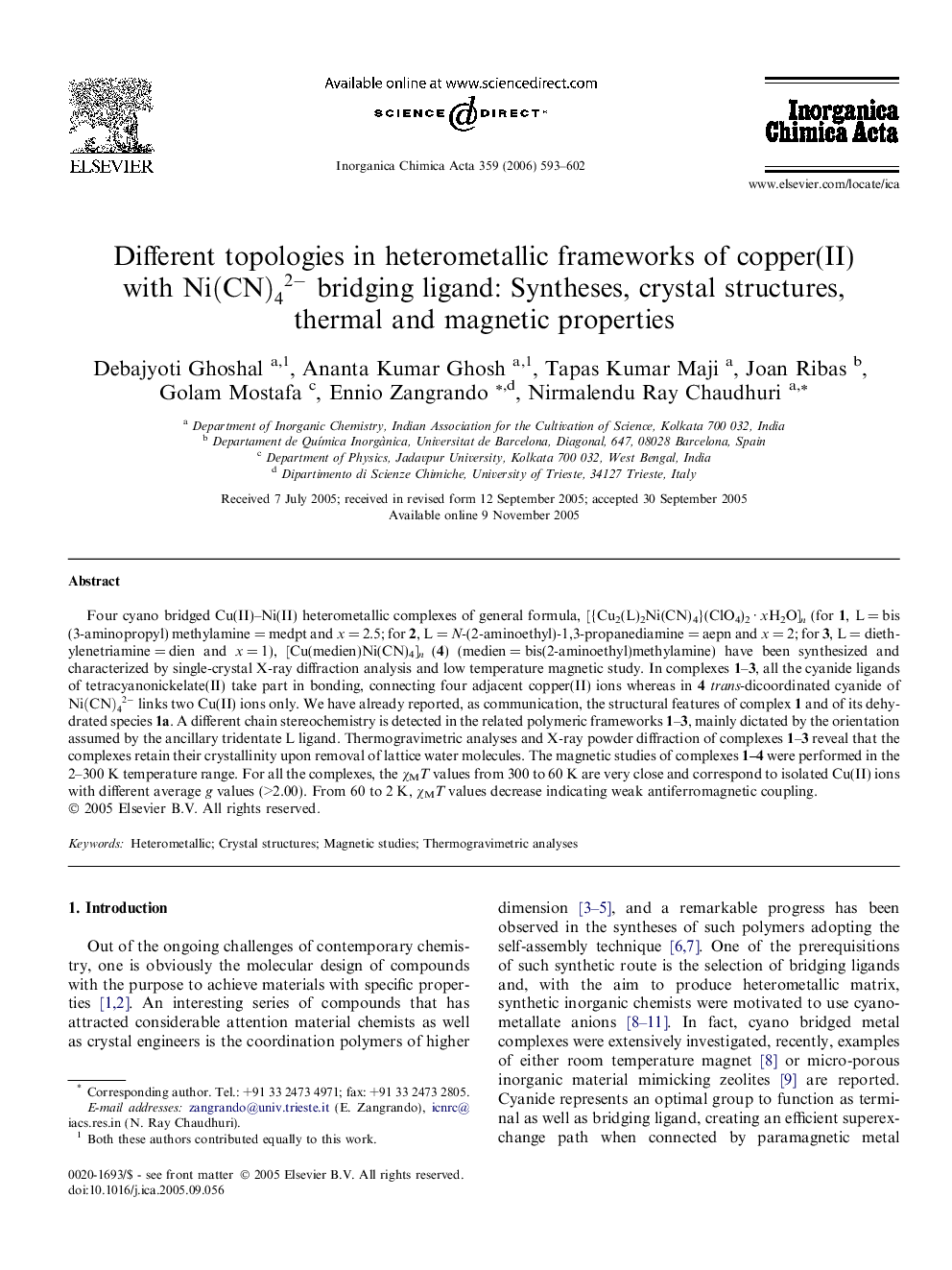| Article ID | Journal | Published Year | Pages | File Type |
|---|---|---|---|---|
| 1311775 | Inorganica Chimica Acta | 2006 | 10 Pages |
Four cyano bridged Cu(II)–Ni(II) heterometallic complexes of general formula, [{Cu2(L)2Ni(CN)4}(ClO4)2 · xH2O]n (for 1, L = bis(3-aminopropyl) methylamine = medpt and x = 2.5; for 2, L = N-(2-aminoethyl)-1,3-propanediamine = aepn and x = 2; for 3, L = diethylenetriamine = dien and x = 1), [Cu(medien)Ni(CN)4]n (4) (medien = bis(2-aminoethyl)methylamine) have been synthesized and characterized by single-crystal X-ray diffraction analysis and low temperature magnetic study. In complexes 1–3, all the cyanide ligands of tetracyanonickelate(II) take part in bonding, connecting four adjacent copper(II) ions whereas in 4trans -dicoordinated cyanide of Ni(CN)42- links two Cu(II) ions only. We have already reported, as communication, the structural features of complex 1 and of its dehydrated species 1a. A different chain stereochemistry is detected in the related polymeric frameworks 1–3, mainly dictated by the orientation assumed by the ancillary tridentate L ligand. Thermogravimetric analyses and X-ray powder diffraction of complexes 1–3 reveal that the complexes retain their crystallinity upon removal of lattice water molecules. The magnetic studies of complexes 1–4 were performed in the 2–300 K temperature range. For all the complexes, the χMT values from 300 to 60 K are very close and correspond to isolated Cu(II) ions with different average g values (>2.00). From 60 to 2 K, χMT values decrease indicating weak antiferromagnetic coupling.
Graphical abstractFour cyano bridged Cu(II)–Ni(II) heterometallic complexes have been synthesized and characterized by single-crystal X-ray diffraction analysis and low temperature magnetic study. Some of them retain their crystallinity upon removal of lattice water molecules and exhibit selective solvent inclusion properties.Figure optionsDownload full-size imageDownload as PowerPoint slide
